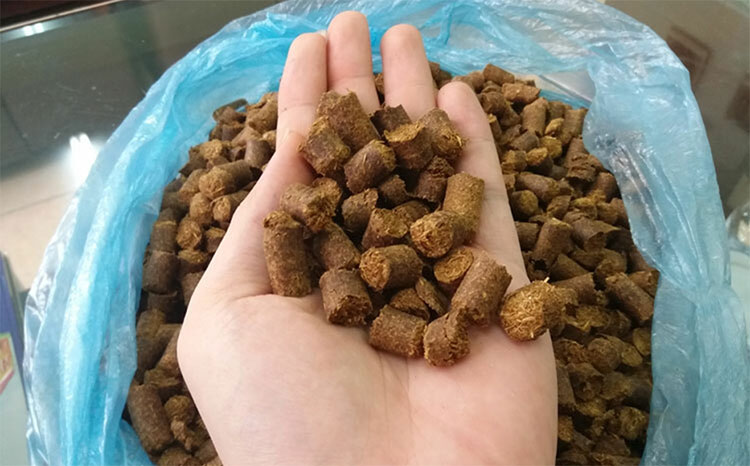'Department of marketing' 'technology for animal feed production and crops from straw and sugarcane leaves
From agricultural residues scientists have used to make animal feed, organic fertilizers bring higher economic value.
Agricultural by-products (straw, straw, corn stalks, sugar cane leaves, sweet potatoes, peanuts .) are considered to be garbage, farmers often have to burn them after each season. Scientists at the Institute of Agricultural Electrical Engineering and post-harvest technology have studied and utilized them to produce animal feed and fertilizer for plants.
With the output of buffaloes and cows, the research team has processed into two forms of raw feed for buffaloes and cows scattered in areas of scarce or seasonal food sources and Complete mixed feed (TMR) for concentrated livestock.

Raw feed for cattle and buffaloes produced from agricultural residues.(Photo: VnExpress).
Materials used are agricultural by-products, put into small grinding lines, mixed with molasses, urea and some other ingredients and pressed pellets with a diameter of 6 - 10mm.
The complete complete feed production formula follows the same process but the input material is chopped smaller with an average size of 2 - 5cm and mixed with many additives to ensure the nutritional needs of the animal. feed at every age.
In fact, cattle and buffaloes eat well, eat off their diets and grow and thrive, especially with TMR food.
In organic fertilizer products, input materials are crushed to help the composting process take place quickly, the form of finished products is more beautiful, then, mixing with microbial products including 3 strains of microorganisms mentioned above. , incubate the fermentation mixture within 25 - 30 days and then sort and beat.
The research team isolated 3 strains of microorganisms (granted exclusive solution) that can decompose fiber (in agricultural by-products) at temperatures as high as 65 degrees C (microorganism strains Popular only withstand 55 degrees C).
Therefore, they can kill harmful microorganisms and bacteria in the inputs in the hot summer weather, helping to limit the mixing of the compost pile. The result is microbial organic fertilizer.

Microbiological organic fertilizer pellets.(Photo: VnExpress)
To have fertilizer in the form of slow-melting tablets, not washed away, the wind blows when applied, difficult to mix with counterfeit impurities, powdered fertilizers are put into pressed cylindrical members with a diameter of 6-10mm (or have subject to change as required).
This technology also allows to take advantage of animal waste such as manure, biological padding (substrate for spreading breeding facilities) . to produce micro-organic fertilizer with organic content of 50-60%, higher. in microbial organic fertilizer from agricultural residues (45-50%).
Applying in practice, it is only necessary to use microbial organic fertilizer equal to 1/3 of manure to fertilize the plant with the same yield (apply to a orange root only need 6-7kg of organic fertilizer instead of because of 25-30kg of manure).
Dr. Nguyen Nang Nhuong, Deputy Director of the Institute of Agricultural Engineering and Post-harvest Technology, chairman of the project, said that in the coming time, the group will offer a diversified production scale to meet the needs of breeding, cultivation, in accordance with the reserve of input materials and investment capacity of enterprises.
- Seven ways to turn straw into money, instead of burning it
- Bacteria support sustainable sugarcane production
- Japan has the technology to produce cheap fuel from straw
- Why do farmers burn straw?
- Turn straw into fertilizer, save thousands of billion dong
- Trichoderma is capable of treating rice straw in the field
- Breakthrough solution of breeding specialty crops
- Fabrication of gas-burning straw stove without smoke
- Successfully fabricated sugarcane leaf hash machine
- Straw mushroom: Instructions for planting and harvesting
- High-tech house walls
- White cotton aphids damage sugarcane
 'Barefoot engineer' invents a pipeless pump
'Barefoot engineer' invents a pipeless pump Process of handling dead pigs due to disease
Process of handling dead pigs due to disease Radiometer
Radiometer Warp Engine: Technology brings us closer to the speed of light
Warp Engine: Technology brings us closer to the speed of light